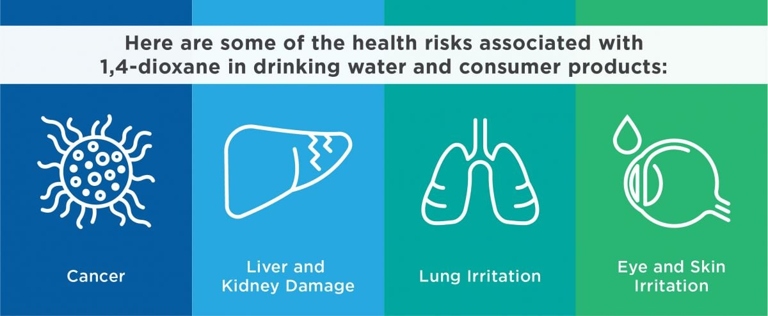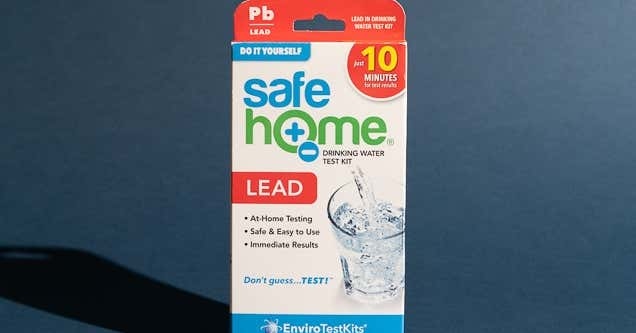We are constantly being bombarded with toxins–in the air we breathe, the food we eat, and the water we drink. But did you know there are hidden toxins in your home that can be just as harmful, if not more so? Here are 5 hidden toxins in your home and how you can test and fix each one.
The 5 Hidden Toxins in Your Home You Need to Know
About!
But the truth is, they may be full of hidden toxins that can be harmful to our health. We’ll also provide some tips on how to fix each one. We all want to believe that our homes are safe havens. In this section, we’ll take a look at five of these toxins and how you can test for them in your own home.
1 – Lead-Based Paint
Lead can be found in a variety of products and materials, including paint, gasoline, water pipes, and cosmetics. While it has some beneficial uses, it can also be toxic to humans and animals. Lead is a naturally occurring element that is found in small amounts in the earth’s crust.
Exposure to lead can cause a variety of health problems, including anemia, brain damage, kidney damage, and high blood pressure. Lead is especially harmful to children, who are more likely to suffer from health problems related to lead exposure.

If you suspect that you or your family has been exposed to lead, it is important to see a doctor and get tested. There are also a number of ways to reduce your exposure to lead, including avoiding lead-based products and materials, and testing your home for lead.
2 – Contaminated Water
We all know that water is essential to life. But did you know that your water may be contaminated with toxins that can harm your health? Here are 5 hidden toxins in your water that you need to know about!

1. Lead
Lead is a metal that can be found in old pipes and fixtures. Lead is a neurotoxin that can cause learning disabilities, behavior problems, and even death. When water comes into contact with lead, it can absorb it into your body.
2. Arsenic
Arsenic is a carcinogen that can increase your risk of cancer. Arsenic is a naturally occurring element that can be found in water. It can enter your water supply through runoff from industrial sites or from agricultural chemicals.
3. Mercury
Mercury is a neurotoxin that can damage your brain and nervous system. Mercury is a heavy metal that can be found in water. It can enter your water through industrial pollution or from natural sources.
4. Chlorine
Chlorine is a chemical that is added to water to kill bacteria. Chlorine can increase your risk of cancer and other health problems. While it is effective at killing bacteria, it can also be harmful to your health.
5. Fluoride
While it is effective at preventing tooth decay, it can also be harmful to your health. Fluoride is a chemical that is added to water to prevent tooth decay. Fluoride can damage your bones and increase your risk of cancer.
Once you know what contaminants are in your water, you can take steps to filter or remove them. You can contact your local water utility or a private laboratory to test your water. If you are concerned about the toxins in your water, there are ways to test it.
How to Test for Toxins in your Home’s Water
Supply
Your home is supposed to be your sanctuary, but it can actually be full of hidden toxins that can be harmful to your health. In this section, we’ll focus on how to test for toxins in your home’s water supply.
There are a few different ways to test for toxins in your water supply. You can either send a sample of your water to a lab for testing, or you can purchase a home water testing kit.
However, this option can be expensive, and it can take a while to get the results back. If you send a sample of your water to a lab, they will be able to test for a wide variety of toxins and contaminants.

However, these kits are much less expensive than sending a sample to a lab, and you will get the results back immediately. If you purchase a home water testing kit, you will be able to test for a limited number of toxins.
No matter which method you choose, it’s important to test for toxins in your water supply on a regular basis. This will help you keep your family safe from harmful contaminants.
3 – Radon!
Radon is a colorless, odorless, and tasteless gas that can be found in your home’s water supply. Although it is not considered a health hazard, it can be a nuisance if it accumulates in your home. If you find that your water supply contains radon, you can fix the problem by installing a radon removal system. You can test for radon in your water supply by using a home test kit or by hiring a professional to test your water for you.
4 – Mold and Mildew
Mildew can also cause respiratory problems. Mold and mildew are both fungi that can grow in your home’s water supply. Mold can cause health problems, including respiratory problems and skin irritation. If you suspect that your home’s water supply is contaminated with mold or mildew, you can test for toxins using a home water test kit.
5 – Air Pollutants
Air pollution is one of the leading environmental health risks today. There are many different types of air pollutants, but the five most common are particulate matter, ground-level ozone, carbon monoxide, sulfur dioxide, and nitrogen dioxide.
Ground-level ozone is a gas that forms when sunlight reacts with emissions from cars, power plants, and other sources. Particulate matter is a mixture of solid and liquid particles suspended in the air. Nitrogen dioxide is a gas that comes from car exhaust and power plants. Sulfur dioxide is a gas that comes from burning coal and oil. Carbon monoxide is a colorless, odorless gas that comes from burning fossil fuels. It can come from a variety of sources, including car exhaust, power plants, construction sites, and wildfires.

That’s why it’s important to test for toxins in your home’s water supply. All of these pollutants can have serious health effects, including respiratory problems, heart disease, and cancer.
These kits can be purchased at most hardware stores. They usually come with a test strip that you dip in a sample of your water. The strip will change color if it detects toxins. The most common way is to use a home water test kit. There are a few different ways to test for toxins in your water.
Another way to test for toxins is to send a sample of your water to a lab. This is usually done by your local water utility. They will test the water for a variety of different contaminants, including toxins.
These systems can be purchased at most hardware stores. They will remove toxins from your water, making it safe to drink. The most common way is to install a water filtration system. If you find that your water is contaminated with toxins, there are a few things you can do to fix the problem.
They may be able to help you find a way to remove the toxins from your water. You can also contact your local water utility.
Frequently Asked Questions
1. What are the 5 hidden toxins in your home?
2. How can you test for these toxins?
3. How can you fix each one of these toxins?
1. The 5 hidden toxins in your home are: carbon monoxide, radon, lead, asbestos, and mold.
2. You can test for these toxins with a carbon monoxide detector, a radon test kit, a lead test kit, an asbestos test kit, and a mold test kit.
3. You can fix these toxins by:
-Installing a carbon monoxide detector
-Testing for radon and fixing any leaks
-Testing for lead and removing any sources of lead
-Testing for asbestos and removing any sources of asbestos
-Testing for mold and removing any sources of mold
Final thoughts
There are many toxins that can be found in the home, and it is important to be aware of them. There are a few ways to test for these toxins, and many ways to fix them. By taking these steps, you can help to keep your home safe and healthy for you and your family.
